The Off-Balance Variety Show: July 2025.
Crime capers, cinematic time machines and Richy Mitch & The Coal Miners.
And here we are! I hope everyone had a great July.
In Off-Balance custom, here is a snapshot of what I watched, listened to, read and (mostly) enjoyed over the past month (that is, what I haven’t covered already).
As always, thanks for reading!
Until next time,
Ryan.
Movies
TV
Music
What’s Next?
Substack Spotlight
25 movies for 2025
,
My Legion Year
The Game Within the Game is Disappearing
The Artists Who Built Tribeca
,
Clash by Night (1952)
After years away, Mae (Barbara Stanwyck) returns home to Monterey, reuniting with her brother Joe (Keith Andes) and meeting his girlfriend, Peggy (Marilyn Monroe), with whom she strikes up a quick friendship.
Though planning on slowly reintegrating and despite her hesitation on marriage, Mae is soon proposed to by Jerry (Paul Douglas), a local fisherman.
Meanwhile, although she initially makes no secret of her dislike, Mae finds her dynamic with Jerry’s uncouth and boorish friend Earl (Robert Ryan) becoming increasingly more complex… and in time, realizes that, one way or another, all of their worlds are on the verge of crashing down.
On one hand, the moment-to-moment foundation of the film, held up by its performers, is strong enough. Ryan and Douglas as polar opposites, while Stanwyck and Monroe, though they don’t share much screen time, have noticeable chemistry, which they play well.
But on the other, Clash by Night, when all is squared away, has very little of substantial value to offer.
Adapted by the Clifford Odets’ play of the same name and though directed by medium titan Fritz Lang, it often finds itself disjointed thematically, neither a proper noir, a believable drama nor an effective romance. It does try to blend all these pieces together but can never get a clear handle on one before the other slips past, creating a feeling of, at best, whiplash and otherwise, disinterest.
Similarly, though watching any film from the period comes with an understanding of shifting social and cultural norms, Clash by Night is so aggressively misogynistic and more than once, racist, it veers into hard unpleasantly, disgust even, early on from which it never recovers.
These elements are not critiqued or commented on in a way that would see them filtered under any real lens of characterization, unsurprisingly but make the film itself, come the closing card, nigh unpalatable.
The leads do what they can but it is for naught.
Rating: 4.8/10
Napoleon (2023)
As he relentlessly climbs the socio-political ladder in post-revolutionary France, military officer Napoleon Bonaparte (Joaquin Phoenix) soon finds himself leading the country, determined to bring all of Europe to its knees.
Though as his marriage to aristocrat Joséphine (Vanessa Kirby) proves as volatile as his ambitions, Napoleon realizes his destiny, as proclaimed, will not bend so easily.
In theory, Napoleon directed by Ridley Scott and written by David Scarpa, in the style of overblown historical epics Scott has made his most visible speciality, should work well enough: this, in putting the broad strokes of the Emperor’s life to the screen, though boilerplate in its biopic mold as it is.
Visually at least, it delivers.
The action sequences, its centrepieces, are brimming with all the bombastic violence one would expect from a war film, while making full use of their general historical precedent, from the Invasion of Russia to Waterloo. The costuming, the period piece sheen, it clicks, if somewhat surface-level considering, while on the performance side, Kirby is the film’s standout, putting forth the strength of Joséphine’s individualism despite the larger social and political machinations for which she is caught between.
Otherwise though, Napoleon can’t escape its procedural, by-the-numbers leaning and continually suffers for it: the pacing, the structure, the much decried historical inaccuracy (far more than the norm), which instead of (if nothing else) opening the film up creatively, stifles it at every turn.
It isn’t an entirely one-to-one comparison but while Scott’s other recent efforts in such spaces like say, the Gladiator films embraced their more fantastical framework, Napoleon is inherently bound to something more rigid and simply can’t work within it. Though his on-page characterization does limit his approach, Phoenix’s Napoleon plays as though he is asleep at the wheel, barely crossing the minimum emotional threshold the role requires and when it is off the battlefield or when Kirby isn’t there to at least inject some life, it is clear Napoleon is both, paradoxically, tremendously antsy and tremendously bored, a winning combination, there never was.
It does open the door for the uninitiated to delve more fully into Napoleon’s life without the over-produced melodrama (to Scott’s outrage no doubt, as his not-really-supposed-to-be-funny retorts about the project’s called out historical inaccuracy confirmed) but that doesn't mean the film as is can be touted as a worthwhile investment.
Successful in the expected but not much else.
Rating: 5.2/10
Lee (2023)
In the late 1930s, as the spectre of the Second World War grows ever larger over Europe, former model turned photojournalist Lee Miller (Kate Winslet) finds herself caught at a crossroads of sorts, between passion and inaction. So joining Vogue under editor Audrey Withers (Andrea Riseborough), in the years following, Lee begins documenting The Blitz in London and is praised for her humanistic eye, despite the chaos surrounding her lens.
Though when she is paired with David Scherman (Andy Samberg) and moves into work as a war correspondent, as they travel across Europe, Lee, falling to substance abuse, struggles in compartmentalizing the horrors she witnesses.
Yet decades later, while being interviewed on her life and work by a forthright journalist (Josh O’Connor), Lee realizes, for better or worse, that she must find a measure of peace.
Long-simmering, Lee, directed by Ellen Kuras and officially co-written by a trio consisting of Liz Hannah, John Collee and Marion Hume, was first announced in 2015, eight years prior to its eventual release, with Winslet attached to star even then. And when interviewed by Vogue (naturally) in 2023, Winslet, who next to being a producer, was also the film’s primary creative driver, spoke candidly, acknowledging the hurdles that needed to be cleared in bringing the story to the screen. Be it personally funding portions of production herself or working closely with Lee Miller’s son, Antony Penrose, in their quest to ensure as close a level of historical accuracy as any one biographical film can allow (Penrose’s book, The Lives of Lee Miller, being the basis on which the script was adapted).
For ultimately, yes, the film follows that as-expected template without much in the way of serious deviation, yet in a way that makes it clear that while it is telegraphing its beats, it is also allowing the viewer to exist alongside them.
To this end, while technically a war film, outside of Lee being on-the-ground during the Battle of Saint-Malo, Lee is very much a character outing: grappling, internally, externally, with both the decisions they’ve made and the world, violent and inhumane, that dictates them.
While the 1970s-set framework is restless, interjecting too often and only it seems, as a showcase to allow O’Connor to look forlorn as he furrows his brow (similarly, for Alexander Skarsgård and Marion Cotillard who don’t have much, comparatively, to chew on), it is the leads who carry the bulk of the creative bearing.
Though Samberg, to surprise as someone who has built a career on the back of his comedic sensibility, is quite effective as Scherman, in his first one-to-one dramatic role. His fire isn’t as outward as Lee’s but he acts then as a countermeasure when needed and counsel elsewhere, while quietly supporting her however he can, even in the face of his own growing horror, over the course of their reporting.
But the film, in totality, belongs to Winslet.
By the time Lee is first introduced, it is clear she has already grown wary of the world but isn’t wholly jaded because of it, determined to showcase the cost of war, even if she can’t entirely vocalize why. Pushing back against misogyny, doubt and those who think less of her to acclaim in her photography, in the face of heavy personal cost.
Winslet makes her relatable and deeply human, her pain clear, her mission, understood.
Structurally, Lee falls short of reaching a higher level, unable to maximize most of its supporting cast, both of its time periods and the inherent predictability in its biopic set-up. But held together by the committed performances of its leads, a maturity within its subject matter and an effort to spotlight an impressive but perhaps lesser known historical figure, it is a film of strength where it matters most.
Rating: 7.6/10
The Romanoffs (2018)
Occasionally, it isn’t hard to see the base appeal for The Romanoffs.
The follow-up effort from writer-director Matthew Weiner post Mad Men, who, with prestige to burn in the mid-2010s, turned that energy into this eight-episode anthology: loosely supported by the ghosts of the titular Russian royal family, of which various individuals around the world claim to be their descendants.
Thematically, to its credit, given the grey area in which it could chose to operate, the show’s focus is apparent, tackling identity, culture, elements of social status and overall, the general mundanity of life, in both its ups-and-downs.
Though they may claim to be Romanoff descendants, that doesn’t mean the show’s protagonists are leading charmed lives befitting that supposed status nor are they free of temptation or immorality.
A few performers (primarily Weiner’s former Mad Men collaborators) have lead roles episode-to-episode and some recur, if not binding the show to any overarching, new style anthology node, à la Fargo.
Where the show stumbles is that it becomes very clear, very quickly, is that it isn’t quite sure how to innovate beyond its immediate premise in a way that would truly justify the decision to have each episode be, at 90 minutes, film-length. Even the strongest episodes have their pacing drag, their production values be stale and their plotting be incredibly transparent. In wanting to explore its stated aims, it runs itself into the ground, not trusting the viewer with nuance, mystery or heavier depth.
Meanwhile, any connection to the royal family itself, though understandably a springboard at best, is increasingly minimized in a way that makes it evident there needed to be a hook to get to air, never truly built out in an interesting way. Beyond the title sequence, the third episode comes closest but again, while it deserves acknowledgment for swerving away, it just can’t do anything of value with its gathered momentum.
The Romanoffs: intriguing and yet, utterly, totally confounding.
Rating: 5.5/10
Manhunt (2024)
April 1865: just as the United States begins to see the American Civil War draw to a close, President Lincoln (Hamish Linklater) is assassinated by well-known actor and Confederate sympathizer John Wilkes Booth (Anthony Boyle).
Going on the run with the help of fellow conspirator David Herold (Will Harrison), Booth is relentlessly hunted by secretary of war Edwin Stanton (Tobias Menzies) and his team, including son Edwin Jr (Brandon Flynn) and right-hand Thomas Eckert (Damian O'Hare).
But as the machine marches on and as Andrew Johnson (Glenn Morshower) is sworn into office, the elder Stanton, finding himself caught between potential conspiracy and political machinations for which he can’t entirely control, becomes determined to bring Booth and his collaborators to justice, no matter the cost.
It is an interesting intersection then, in which Manhunt, created and ran by Monica Beletsky, finds itself.
Dramatizing one of the most well-known moments in American history but recognizing, 160 years later, that not every viewer will have moved in the necessary academic circles regarding the assassination any further than the hard facts.
So based on the nonfiction book Manhunt: The 12-Day Chase for Lincoln’s Killer, strides were taken with Manhunt, per Beletsky, who, speaking with Variety in 2024, acknowledged the work put in to not just hit all those expected period elements - the costuming, set design and character approach, etc - but as well, the history, the details, the people.
Moving from beyond the remembered names to something more real and visible, with undeniable contemporary overtones, even if taking on its fair share of dramatic license.
The show does hit a couple snags with this approach however, particularly in the opening hours of its seven total episodes. Wanting to flesh out Lincoln and Stanton’s relationship specifically but doing so with a front-loaded series of flashbacks that are heavy on, albeit necessary exposition, yet slow in their delivery.
Though that is, in fairness, the crux of Manhunt.
The purposeful, deliberate unspooling of its narrative, building from well before the assassination, to the minutes, the days, even the years afterwards and the long-reaching impact those decisions held.
On the performance side, as Mary, Lovie Simone plays a critical role in the story, pairing a strong humanity with investment, despite not having a wealth of screen-time, while others, like O'Hare, similarly do well in comparatively limited work.
For the show’s primary orbit, naturally given its set-up, is shared between Boyle and Menzies. And Boyle, as Booth, cuts an impressive performance, commanding focus each time he appears on screen, capturing both arrogance and nigh-delusions of grandeur. A man who believes, foolishly, that his destiny has been fated, unable and unwilling to accept that he is viewed as little more than a hot-headed coward.
As Stanton, Menzies doesn’t shy from the fact that his character’s goal, pursuing Booth, despite its importance to the country at large in wake of the war’s end and Reconstruction is also deeply personal, given his close friendship with Lincoln.
He understands the demanding physical toll he is putting himself through but will see justice done. Menzies, as usual, is both understated but powerful and makes Stanton’s mission immediately clear.
Manhunt doesn’t entirely break away from its template but buoyed by strong commitment in so many areas, it is a memorable (and important) watch all the same.
Rating: 8.2/10
Duster: Season 1 (2025)
On the surface, Duster, the J. J. Abrams-LaToya Morgan co-created effort isn’t bringing anything new to the table per se, nor is it reinventing the wheel within its specific storytelling space.
The period piece crime angle hasn’t necessarily been played out in the current consumption arena but it is becoming increasingly familiar, meaning any new project that choses that sandbox must stake a claim to individuality within a well-established framework.
Duster doesn’t entirely break away from those expectations but in proudly carrying both its influences and its own style on its sleeve, the show stands out enough to make an impact over its eight episodes: in what is now its first and seemingly only season.
In early-1970s Arizona, smooth-talking playboy Jim Ellis (Josh Holloway) works as a driver and occasional fixer for mob boss Ezra Saxon (Keith David), of whom his father (Corbin Bernsen) is a long-time associate.
But when rookie FBI agent Nina Hayes (Rachel Hilson) presents Jim with concerning new evidence from a shuttered investigation for which he has close personal ties, he reluctantly agrees to become an informant - hoping to unravel the truth while simultaneously, helping Nina build a case against Saxon.
Meanwhile, be it Nina’s field partner Awan (Asivak Koostachin), Jim’s ex-lover Izzy (Camille Guaty) - and their daughter Luna (Adriana Aluna Martinez) - or Saxon’s bloodhound of a right-hand Billy (Evan Jones): as Jim and Nina move deeper into Saxon’s world, everyone finds their paths crossing in dangerous and unexpected ways as the balance of power threatens to be upended.
Again, right from the opening title card, Duster is up against formula and asked to derive a new solution.
Successful, no, not entirely but generally, this sense of “seen it” predictability is only best felt in the opening few episodes, as the show establishes its world. And even then, it isn’t afraid to lean into those buddy-cop/crime drama tropes before subverting them just enough to keep things fresh, while all those auxiliary elements are spot-on: the period appropriate costuming and set design, the musical cues and naturally, the cars themselves.
As outlined in a New York Times promotional piece that ran earlier this year, great pains were made by production to source/retrofit authentic vehicles for shooting, particularly for the titular Plymouth Duster, granting the show a genuine feel in its on-the-ground approach.
And if it wasn’t the stunt team behind the wheel, it was Holloway himself, who undertook considerable test track training for the role and sees it reflected on screen in his character’s naturally-honed skill at top speed. It all works to bring the viewer in and keep them there, instead of just throwing everything into the blender.
To this end, while the story may not strike many notes of revelatory surprise, it is the characters, the performances and the writing circling them, that are the true highlights.
They don’t share too much screen-time but Bernsen and David both do well as Jim’s mentors, if on opposite sides of the coin, with David’s Saxon specifically being charismatic and volatile in equal measure (he is a TV mobster, after all) though with a good amount of humanity, as well.
Elsewhere, Guaty and Martinez have a solid back-and-forth with Jim, while Awan’s dynamic with Nina, via Koostachin, is one of the show’s best: each, finding solace in the other, as outsiders within their shared FBI world.
Though it is the protagonists, in Hilson and Holloway for whom most of Duster is focused on, Hilson, playing with both energy and a hard-earned confidence.
Consistently underestimated and subject to misogynistic treatment amongst most of her co-workers, Nina keeps her true (if predictable) motives regarding Saxon close to the vest but is immediately worth rooting for regardless, her relationship with Jim, in support, slowly evolving from something of necessity to mutual respect.
In contrast, Holloway, even without reuniting with Abrams, is clearly channelling the same too-cool-for-school persona he has built most of his career on - particularly in his defining role on Lost, naturally - but he makes it land.
There is an undercurrent of sadness, frustration even, that Jim possess, over his career, over his life-choices, over the leverage that Nina uses to flip him on Saxon in the first place. He’s charming and flirtatious and damn good at his job but considering those other elements he feels like a real person not just a stock archetype, for which Holloway balances well.
Though most of the discussion surrounding Duster has shifted in the weeks following its finale earlier this month, from Holloway musing on potential season two possibilities to the show being promptly cancelled a few days later, it doesn’t mean it is entirely without merit, by way of that corporate lack of confidence… even if the impact of that cancellation notice is pretty clear.
While the show is remarkably self-contained within its storytelling beats - each subplot, feeding into the overall narrative -, the final two episodes begin visibly branching outwards, only to leave its characters dealt set-up cliffhangers that will, supposedly now, not see resolution. And through this, the show’s general flaws become all that more apparent: its overarching predictability, its as-expected framing, the clunkiness for which it tries to tackle more serious, real-world sociopolitical topics any further beyond the broad strokes.
But the storytelling is generally sharp, the art and design choices or the performances, each brings something worth watching to the table.
Not as tight or as effective it could be but front-to-back, at the very least, Duster is highly entertaining.
Fun, at a time when the word seems a rarity on television.
Rating: 7.5/10
Stick: Season 1 (2025)
Pryce “Stick” Cahill (Owen Wilson) was once golf’s next big up-and-comer but a well-publicized flameout saw him leave the sport behind in disgrace.
Years later, as he continues to battle his personal demons, Pryce strings together a living as a golf shop pro and small-time hustler with his caddy/con partner, Mitts (Marc Maron) before one day, meeting Santi (Peter Dager): a troubled but skilled prodigy whom Pryce takes under his wing, believing he can mentor him to success on the amateur circuit.
So joined by Santi’s mother Elena (Mariana Treviño) and later, bartender-turned-caddy Zero (Lilli Kay), the group hits the road, all trying to make peace with themselves as well as each other.
Stick quickly settles comfortably into the sports-comedy-drama mold which has become commonplace, though it struggles in finding a rhythm that speaks to either fully.
In terms of driving action, though the golf is mostly secondary with character being the focus, the comedy, particularly the low-energy Gen Z potshots are trite, tiresome and no matter how much they are played up, never once land.
Yet conversely, the heavier drama elements can be genuinely effecting, with Wilson, most visibly, getting some strong showcase moments. Pryce, forcing himself to acknowledge his difficult past and how he no longer wishes, through mentoring Santi, in being strictly defined by it.
All this considered, it can feel as though two, even three different versions of the show were initially conceived: the buddy comedy, the road trip/sports burner and the serious drama, all then melded together with little care if the project was tonally or thematically cohesive.
When it works, it does so well (specifically the eighth episode, in which bringing all of its storytelling stakes and character elements together, is, far-and-away, the season’s best) but in trying to line them up side-by-side, the show can never consistently rise above its foundation, even if the last three episodes, with strength, prove that it could have.
Perhaps though, with a second season confirmed, going forward, with enough power behind its drive, Stick can indeed be more than its formula - the pieces are there.
Rating: 6.5/10
No Silent Monks (Richy Mitch & The Coal Miners) (2025)
Just months following the release of their fourth album, Colorado’s On Fire Again, Richy Mitch & The Coal Miners returned in mid-July with their fifth, No Silent Monks.
Ten tracks, clocking in at just a shade under forty minutes and by the group’s own admission, designed to be a looser and simpler record, while still continuing the evolution of their specific indie-rock, folk sound.
Though lyrically song-to-song, it should be said, the album doesn’t see the group expand too far outside their wheelhouse.
There is still that humanistic bent to their songwriting, rich as it is (how fitting), in pursuit of love, acceptance and living-life-to-the-fullest, whatever comes. Their M.O since they debuted and strongly played though it is, complete reinvention, as a byproduct, is in short supply. Production-wise however, while very much built in their established style, No Silent Monks does add a few touches of in-house experimentation, with a kinda-sorta, coffee shop rock flavour, in still neatly fitting the bill of genre standard.
Yet unlike some of their similarly styled contemporaries/one-time collaborators, what continues to separate Richy Mitch is their purposefully unpolished sensibility, though not in discrediting their sound but in crystallizing, elevating it.
They’re not shooting for the more viable hooks of pop-leaning folk and it comes across once more in their delivery of No Silent Monks: truthful and deliberate, if not necessarily trying anything new.
Rating: 7.5/10
Mafia: The Old Country (2025)
Already five years since Mafia: Definitive Edition and nine following Mafia III, if developer Hanger 13 is clearly banking on anything as audiences return to their long-running crime-drama franchise, it is that such time away will only be working in their favour.
And perhaps with their latest entry, that hope will bear out.
A prequel to the entire series, Mafia: The Old Country, takes place in Sicily at the dawn of the 20th-century, as a young man, Enzo (Riccardo Frascari), finds himself drawn into a life of crime, with all the mafia-standard beats in tow: honour, violence, the cost of loyalty, etc, etc.
The catch though, is that the title is primed to once again orbit around the more linear gameplay and cinematic narrative loops these games are at their best working with, something, despite its storytelling highs, Mafia III often struggled with.
To success? We’ll know soon enough, with The Old Country set for release on August 8th.
Eden (2025)
Led by Ron Howard in the director’s chair and a strong ensemble cast, Eden is adapting/fictionalizing a true story: a series of European expatriates who travelled to isolated Floreana in the Galápagos Islands in the 1930s, only to see their dream of a self-governing utopia quickly collapse under personal inability, harsh living conditions and growing mistrust.
A classic thriller, with an unpredictable human element in support, after debuting at TIFF last year, Eden heads for the big screen on August 22nd.
Substack Spotlight
There are many wonderful writers, out there in the wild but specifically so, here on Substack.
In that spirit, here are a few articles I really enjoyed this past month, including some from valued members of the Off-Balance community.
Do feel free, if you haven’t already, to expand your horizons and check out what they have on offer.
“25 movies for 2025”
,
Sometimes, trying to discern films of record can feel a nigh-impossible task: be it taste, preference or broader expectation.
But balancing both a comedic and personal touch, across genres, styles and filmmakers, in this piece,
breaks down her choices for the 25 best movies of the quarter century so far.And be it recommendations or reasons to revisit, for each, she sees there is something to learn.
You can find Nic at .
“My Legion Year”
While the comic book movie boom has seen superhero storytelling brought to more full life, ultimately, little can match the experience of actually picking up a book, turning the pages, the one-to-one physicality of it all.
Though in pairing personal anecdotes with a sharp feel for The Legion of Super-Heroes’ long-running history, Alex speaks to that experience closely, through different arcs, creatives and eras, the chase the medium so inspires.
You can find him at .
“The Game Within the Game is Disappearing”
For decades, it seemed baseball, more so than its immediate contemporaries in the North American sporting space, would stay as it was. The on-the-diamond fundamentals, nigh encased in amber, a degree removed from the urge to drastically alter its presentation in the social media age.
But the past few years have seen MLB bring visible changes to the sport, be it the universal DH, the pitch clock or the on-base runner in extra innings.
To the game’s betterment? Depending on one’s perspective, no doubt but
, with this piece acknowledges, to effect, the reverse: how a certain minutia, a particular sense of character, a once-understood subtlety have all been minimized with the advent of these changes and how baseball seems unwilling and unable to reverse course, that is, in the face of viewership and bottom-line financial numbers.The great irony, masked behind the façade of legacy and propped up with ill-gotten gambling gains: in the supposed pursuit of simplicity, engaging with the game has never been more complicated.
“The Artists Who Built Tribeca”
,
Even in New York City at large, the neighbourhood of Tribeca specifically has long held a strong place in the cultural imagination.
Though starting with the area’s formative development in the early 19th-century and tracing its history into the present, with this piece, Sophie brings a voice to that essence, from industry, art and culture, to even the t-shirts one might see as they walk past.
What are the places we live but history, molded? Ideas and people, collapsing and shaping and inspiring? Sometimes, those answers might seem unattainable but Sophie’s sheer enthusiasm serves as reminder to keep searching, wherever it leads.
You can find her at .



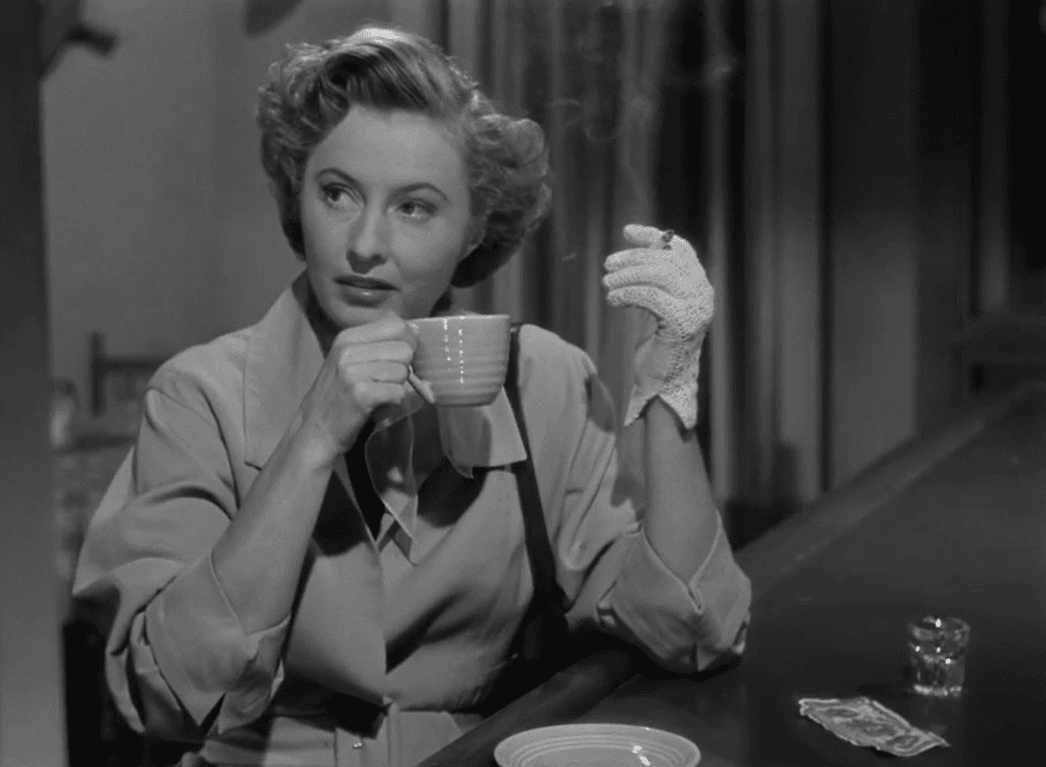
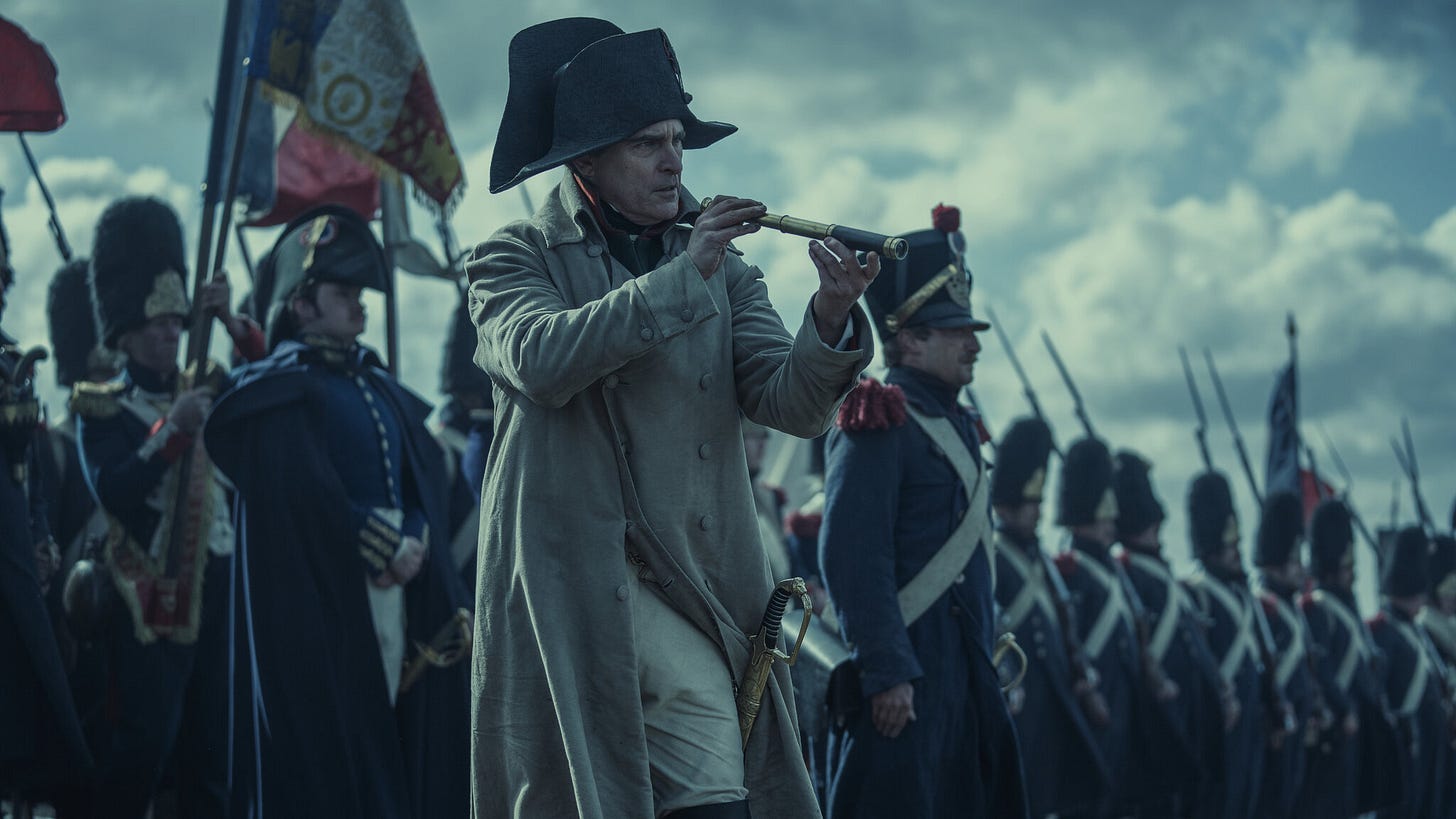



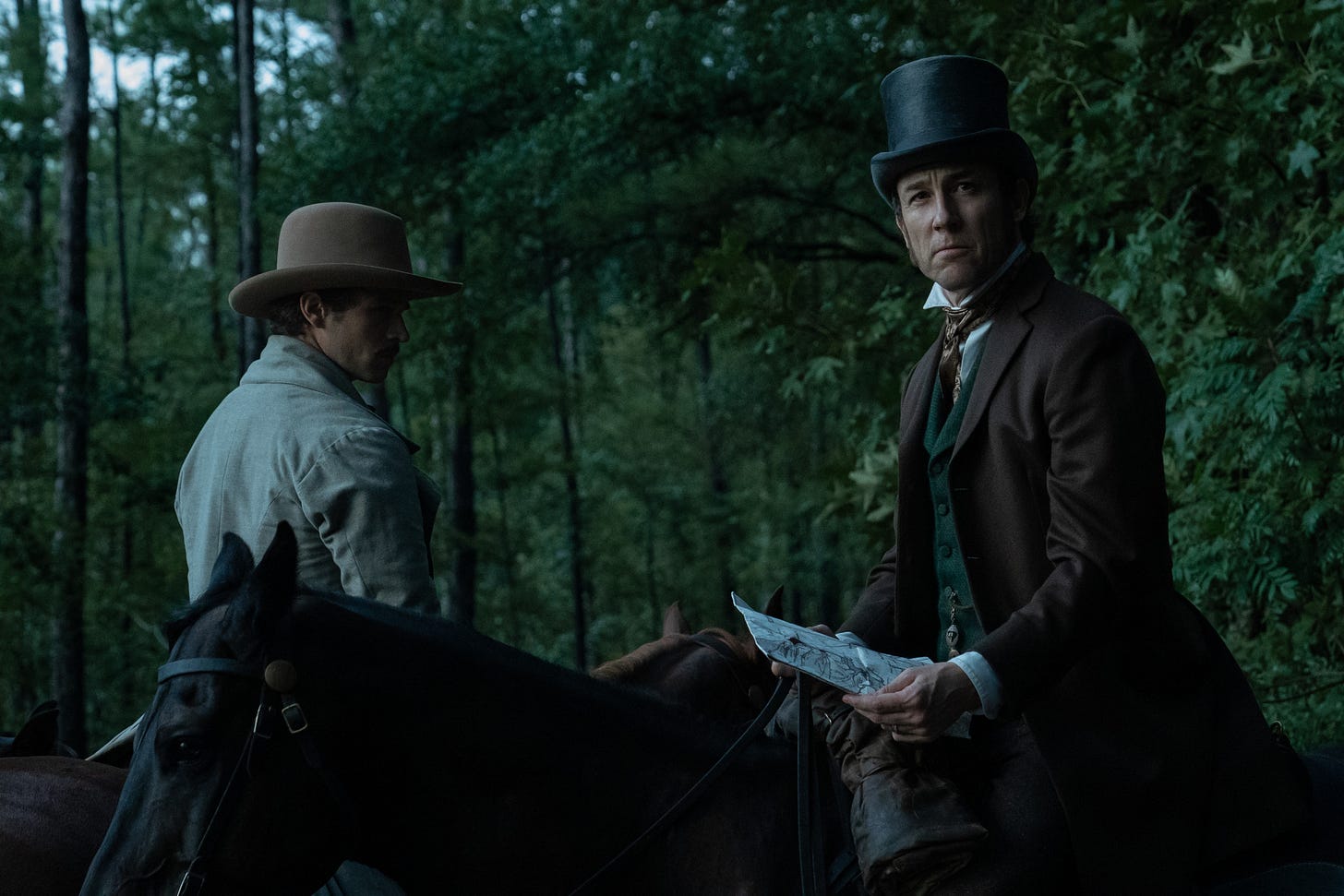
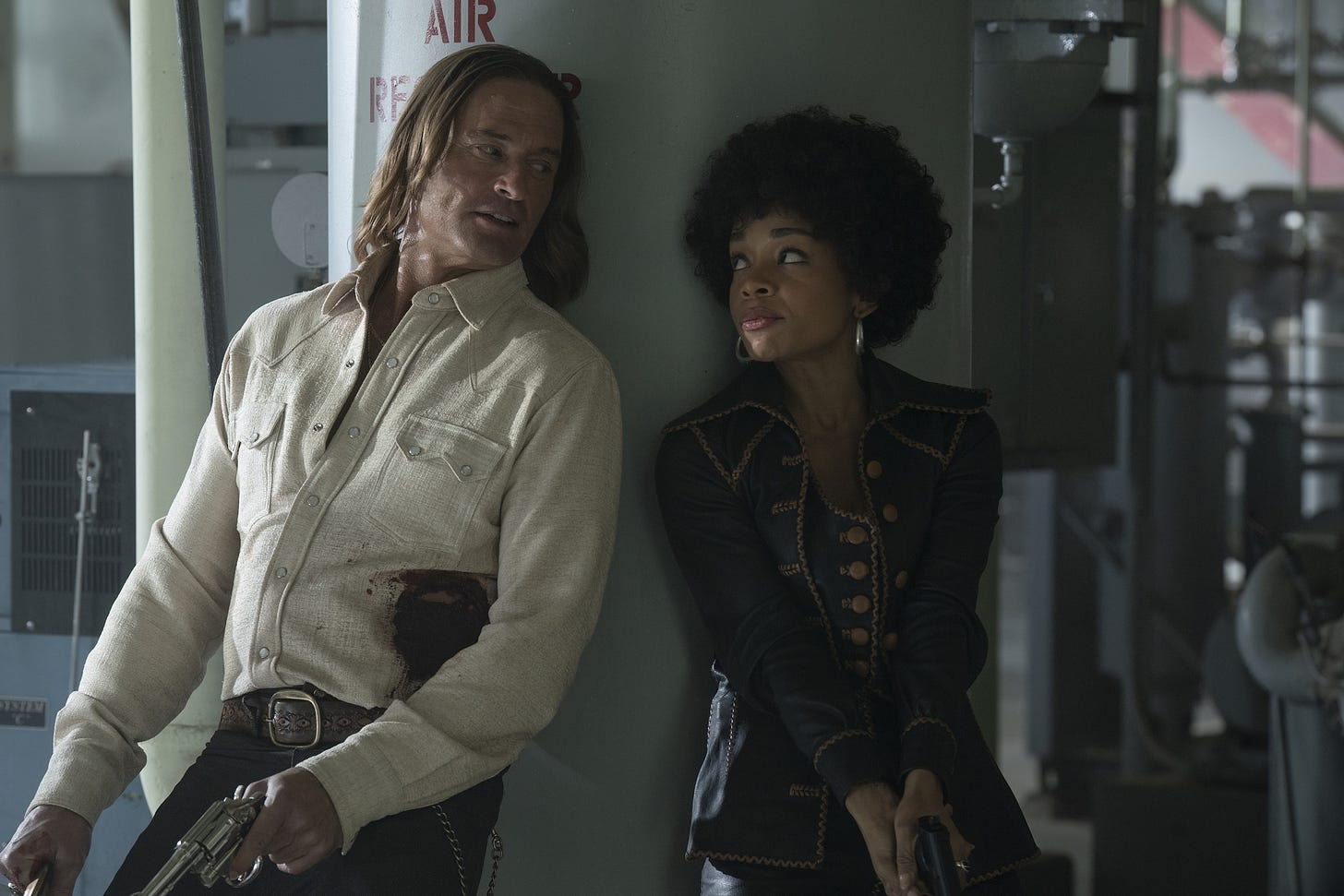
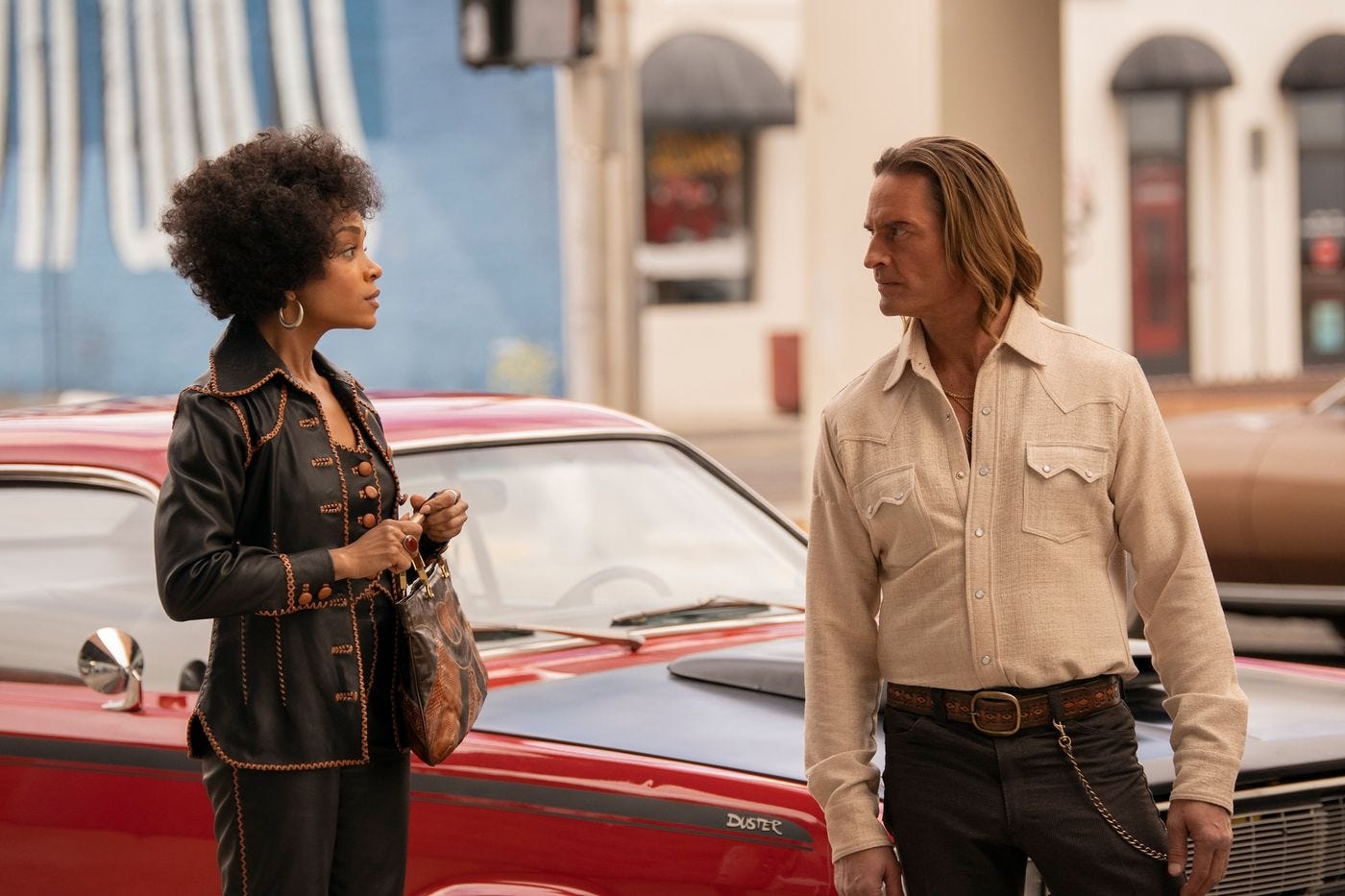





Honored to be featured!! Great roundup 🤠🙌🏻
oh my gosh! thank you so much for the feature, really appreciate the kind words :’) and i’m counting down to mafia: the old country myself!